Reef Spotlight: Chris’ Algae Farm (ELOS 160)
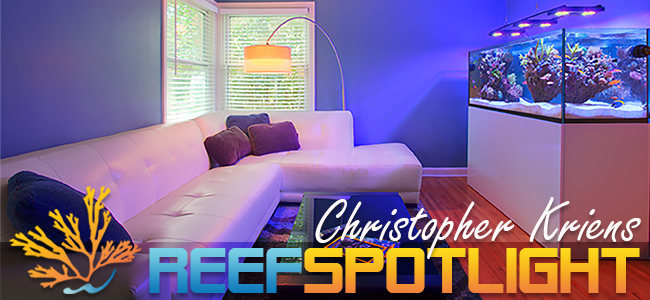
• Name •
Christopher Kriens
• R2R Build Thread •
Chris’ algae farm (ELOS 160)
• Introduction •
Thanks for the honor of nominating my tank for the Reef Spotlight! There are so many great tanks on the site, a number of which have inspired aspects of this build. This system is still quite young, not yet having reached the two year mark and I’m sure there are plenty of changes and challenges to come.
I got my start in the hobby in 2010 with a used 90 gallon tank as an indoor winter project. The entirety of knowledge I had about the equipment was from what I could coax from the seller as we loaded everything into the truck. I didn’t personally know anyone in the hobby at the time and it would be years until I joined a local reef club. As I learned the basics from online forums, books, and local fish stores, I fumbled my way to my first mixed reef. The system ran for about 2 years and I eventually broke it down when I bought my first home in August
of 2012. Like many first-time tanks, hair algae had gained a foothold and detracted from some of the aesthetic rewards of having a reef tank; The title of my current build thread pays homage to the end state of the 90 gallon. I sold out of the hobby completely when we moved in to our new home and when life got back to normal six months later, I took delivery of my first new tank.
The display is a custom ELOS 160 rimless with the overflow and return installed on the left to accommodate the room layout. The display measurements are in metric and the 160 in the name is confusingly just a reference to the tank’s length in centimeters. The actual volume is 145 gallons with dimensions 63L x 23W x 24H. All four sides are low iron glass and the bottom of the tank is double paned. The stand is one of my favorite parts about the ELOS Systems. I’ve enjoyed a more classic ornamental wood stand in the past, but I decided that for this build I wanted a stand that said “Don’t look at me.” Besides having a great modern look, both the stand and the tank do a great job of allowing the viewer’s attention to fall on the contents of the aquarium first, which for me is what it’s all about. The stand is partitioned down the middle and allows for compartmentalization of wet and dry equipment.
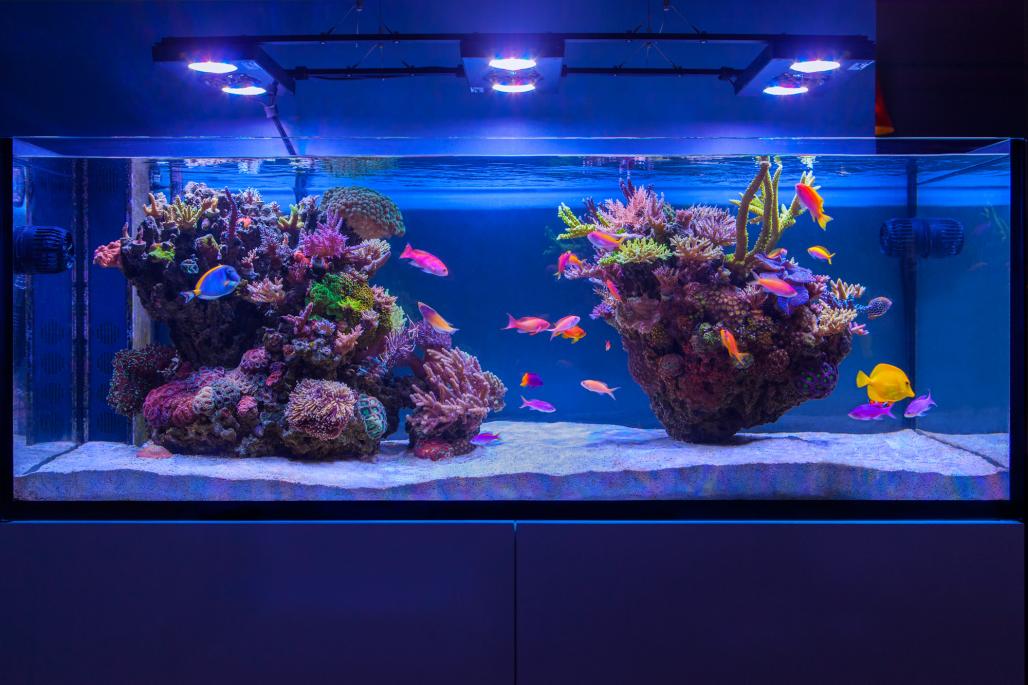
The aquascaping was built out on the floor in our basement with the dimensions of the tank taped out. It was important for me to leave enough space for swimming room on all four sides and to fill a lot of the vertical space in the aquarium. I decided early on that I wanted a two island arrangement, but wanted to avoid the unintended symmetry that can easily occur with this layout when the structures look too similar. This led me to build an inverted rock structure for the right island which struck me as looking more organic and similar to some of the larger coral outcroppings I’d seen while diving. I spent most of the time trying to create a left structure that sufficiently contrasted, but still mated well with the right.
Because the tank is in the living room, there is a limited amount of space for equipment. As soon as equipment leaves the stand, it’s encroaching into our living space. This limitation has forced me to really weigh my options and as a result, I’ve only added the hardware that is essential. In the end, I don’t really miss the extra gadgets and it’s taught me that success can be achieved with fewer toys.
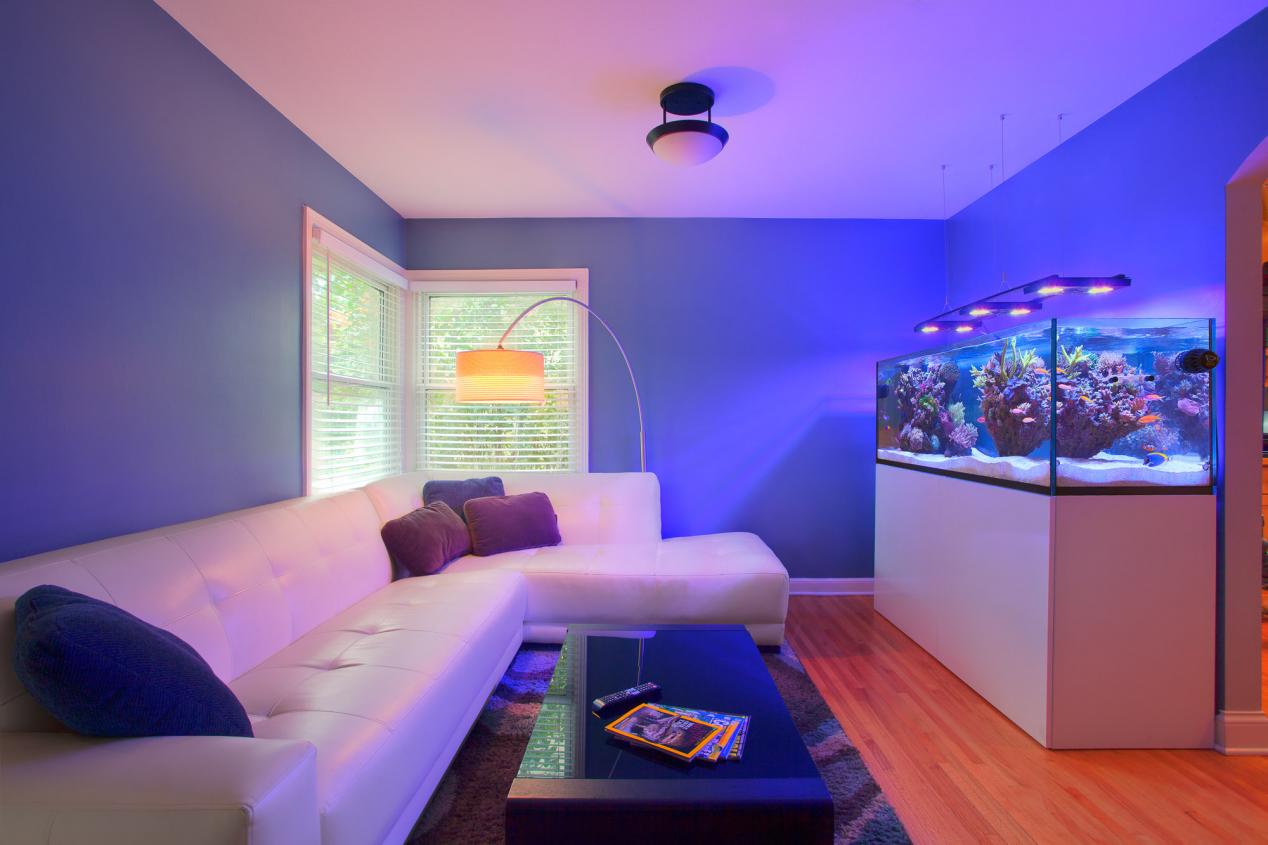
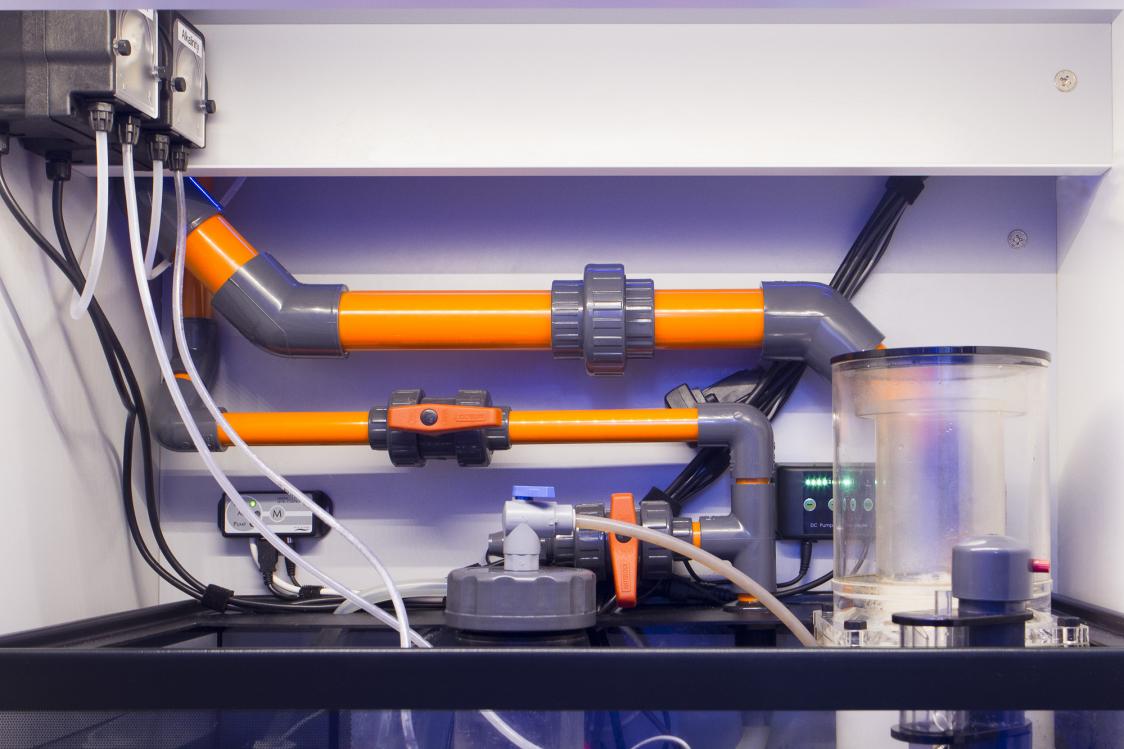
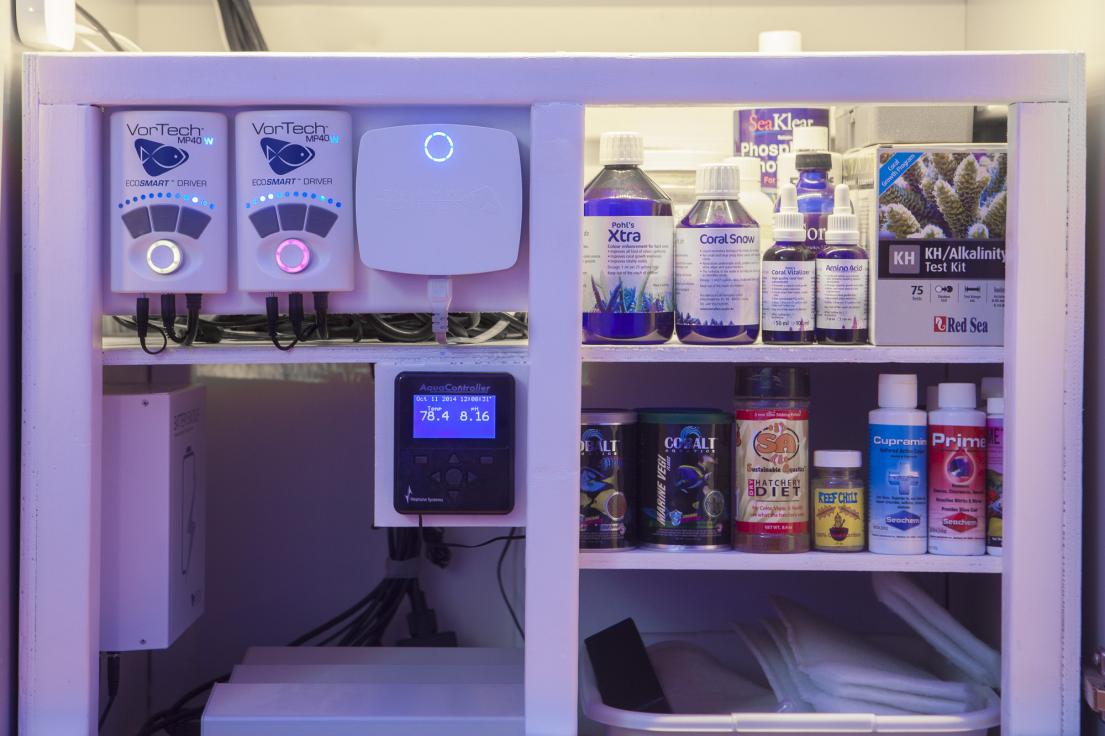
• System Profile •
o Display tank
Custom ELOS POOL 160 (63L x 23W x 24H)
o Stand
ELOS SQUARE 160 in white
o Sump
ELOS 40 Gallon Sump, 4 chambers
o Protein Skimmer
ELOS PS2000 Skimmer with Sicce PSK1000
o Carbon/phosphate filtration
Reef Dynamics Biopellet Reactor running 2 cups of BRS pellets
Bulk Reef Supply ROX Carbon run passively in filter sock
o Return Pump
Diablo DC3500 Variable Speed Return
o Water Circulation
2x Ecotech Marine MP40W ES
o Lighting
3x Ecotech Marine Radion XR30 G3
o Ca/Alk/Mg Dosing
Dosing ESV B-Ionic 2 Part with BRS 1.1mL Dosing pumps
o ATO
ELOS Osmocontroller from 10 gallon freshwater reservoir
o RO/DI
BRS 4 Stage Plus RO/DI Filter into 75 gallon vertical storage container
o Heating/cooling
Eheim Jäger 200W heater
No chiller
o System Controller
Neptune Apex monitoring temperature and pH
• Water Circulation & Flow Summary •
Vortech modes vary during the day from Reef Crest to Nutrient Transport to Lagoon and then run in Constant mode throughout the night. The amount of flow in the tank correlates with the amount of light output at any given time. The Vortechs are positioned on the front-left and rear-right of the aquarium. This creates a counter-clockwise motion (when viewed from the top) which ensures that the entire body of water is moving in a circular path and will eventually make its way down into the sump for filtration. As the acropora grow out, flow is becoming less and less adequate and more powerheads are in the near future.
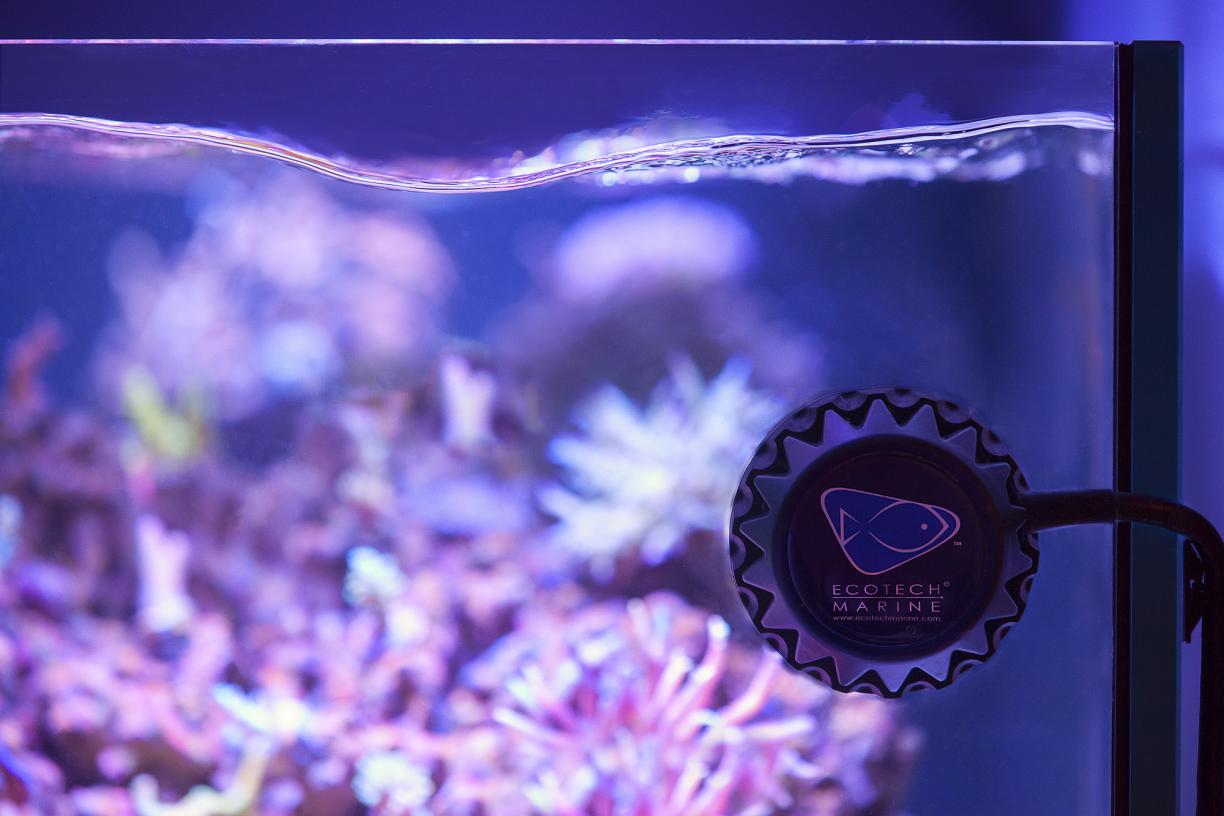
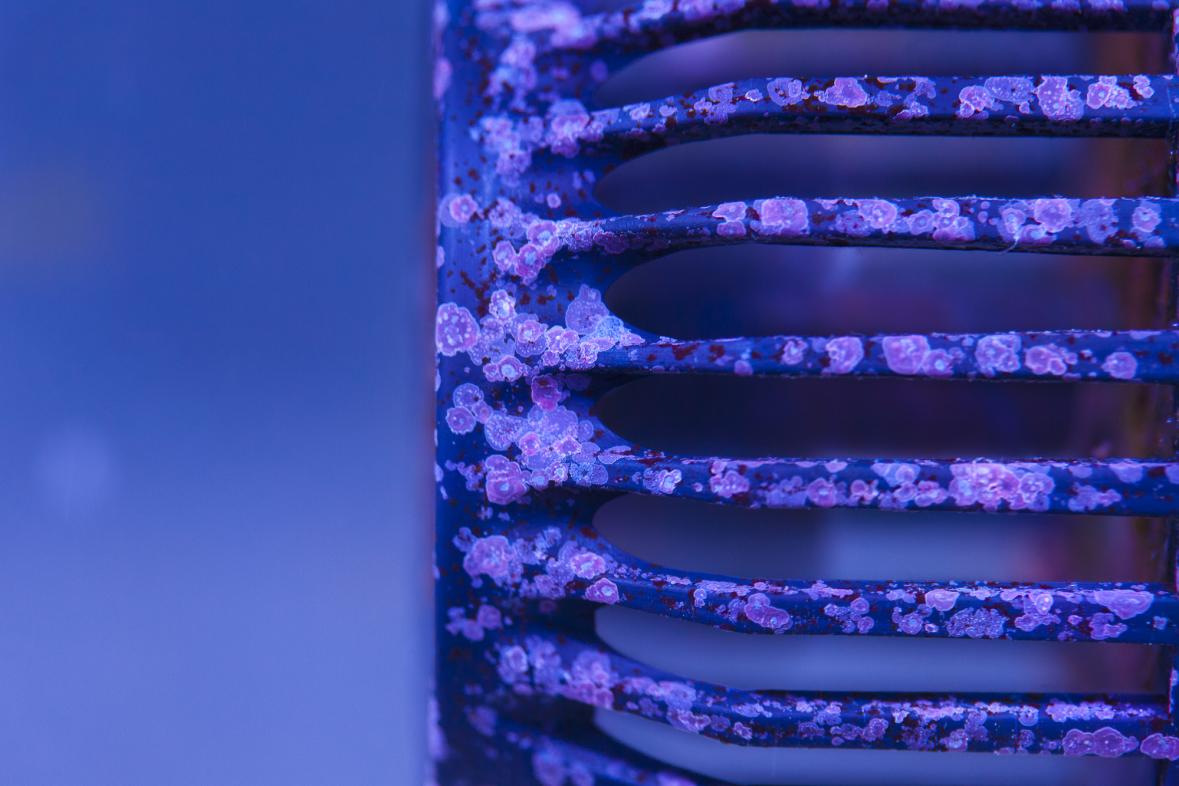
• Water Parameters •
o Temp
Target: 78ºF : Measured Range: 77.5 – 78.5ºF (Apex)
o pH
Target: 8.2pH : Measured Range: 7.8 – 8.3pH (Apex)
o Specific gravity
Target: 1.025 SG : Measured Range: 1.025 – 1.026 SG
o Nitrate
Target: 0.0ppm : Measured Range: Undetectable (Red Sea Pro)
o Ammonia
Target: 0.0ppm : Don’t test
o Nitrite
Target: 0.0ppm : Don’t test
o PO4
Target: 0.04ppm : Measured Range: 0.00 – 0.07 ppm (Hanna Checker ULR)
o Calcium
Target: 420ppm : Measured Range: 400ppm – 430ppm (Red Sea Pro)
o Alkalinity
Target 7.2dKH : Measured Range: 7.0 – 7.4dKH (Red Sea Pro)
o Magnesium
Target 1300ppm: Measured Range: 1250 – 1350 ppm (Red Sea Pro)
• Lighting Summary & Objectives •
Ecotech Marine’s Radions provide an awesome wide-spectrum light. The tall aquascape and the gap between the lights drove a switch to wide angle lenses, both to reduce hotspots underneath and to supply more light to the areas between the fixtures.
The lighting schedule is fashioned to be a reasonable compromise between growth and color. In my experience, corals are able to adapt to a wide range of lighting conditions and so the schedule also takes into account my personal schedule and visual tastes. The lights come on quickly around 7:30am– I like to take a quick look at everything and want to be sure the fish are out so that I can feed before I leave in the morning. They slowly ramp up and peak around 80% at 2:30 in the afternoon and then transition into a deep actinic period until about 10pm.
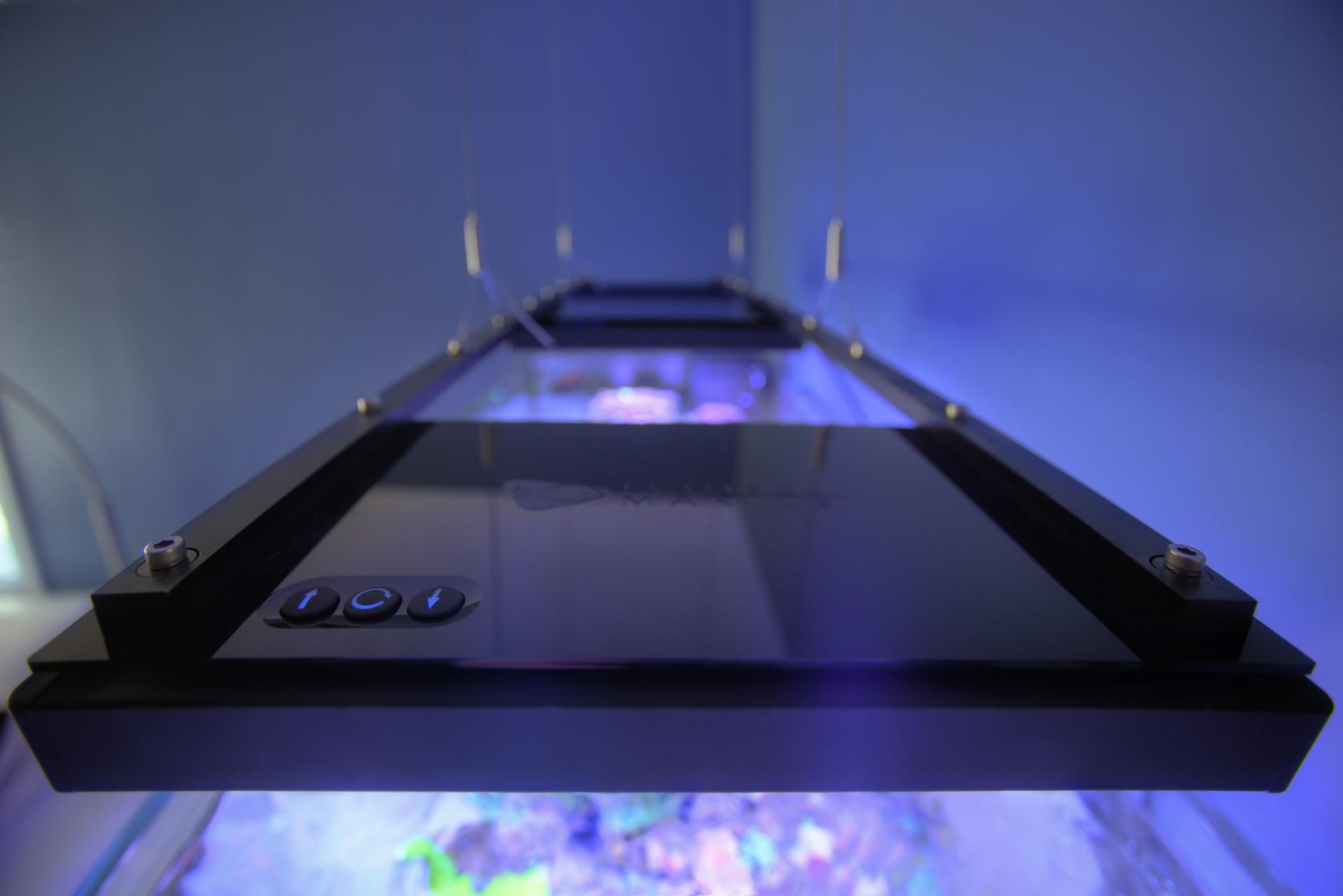
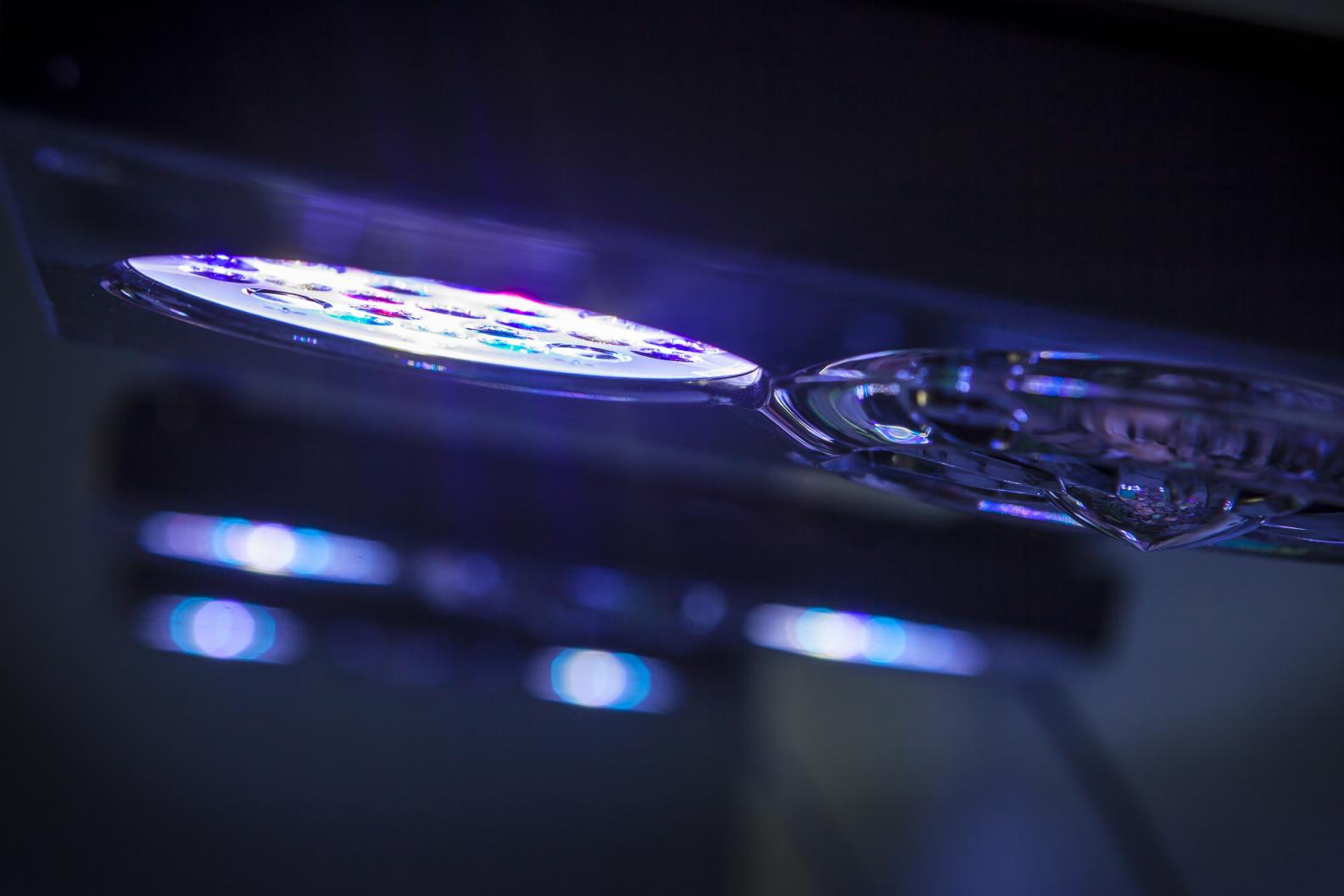
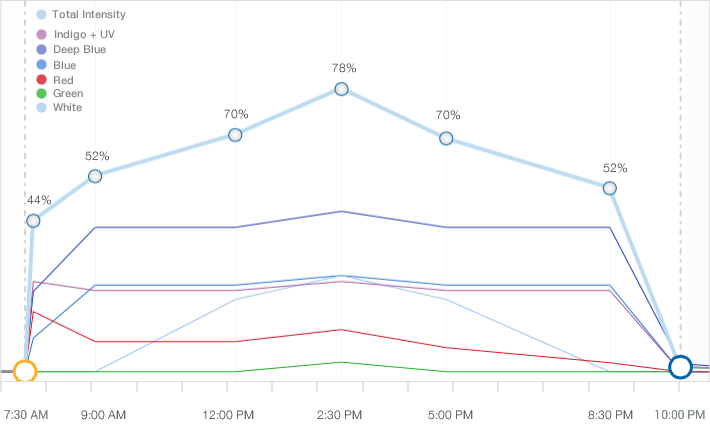
• Filtration & Water Quality •
The combination of anthias- which have a high metabolism requiring multiple feedings per day and acropora- which require pristine water to look their best, presents a modest water quality challenge. This system needs to handle a high volume of nutrient throughput; lots coming in and just as much going out. Biopellets have been the nutrient export workhorse for the system since its inception, keeping nitrates to zero and phosphates to a manageable level with no daily (or even weekly) maintenance required. I maintain bacterial diversity with weekly additions of ZEOBak. A protein skimmer and filter sock also aid in filtration and I make a small (about 10%) water change every two or three weeks with Red Sea salt.
• Tank Inhabitants •
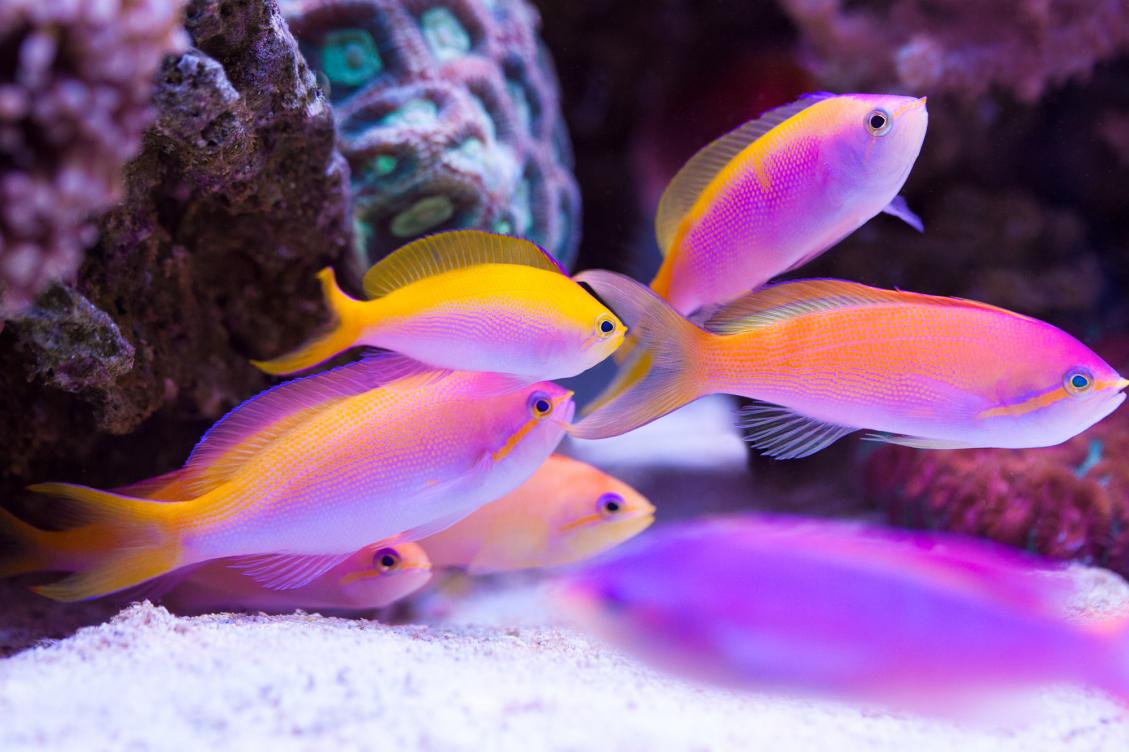
o Fish
1- Royal Gramma (Gramma Loreto)
1- Yellow Tang (Zebrasoma flavescens)
1- Powder Blue Tang (Acanthurus leucosternon)
1- Leopard Wrasse, Female (Macropharyngodon meleagris)
1- Golden Rhomboidalis Wrasse, Terminal Male (Cirrhilabrus rhomboidalis)
1- Clownfish, Male (Amphiprion ocellaris)
1- Candy Basslet (Liopropoma carmabi)
1- Lyretail Anthias – Male (Pseudanthias squamipinnis)
2 – Lyretail Anthias – Female (Pseudanthias squamipinnis)
1- Bartletts Anthias – Male (Pseudanthias bartlettorum)
1- Bartletts Anthias – Female (Pseudanthias bartlettorum)
2- Carberryi Anthias – Male (Pseudanthias carberryi)
1- Carberryi Anthias – Female (Pseudanthias carberryi)
1- Ignitus Anthias – Male (Pseudanthias ignitus)
2- Ignitus Anthias – Female (Pseudanthias ignitus)
2- Purple Queen Anthias – Female (Pseudanthias tuka)
1- Resplendent Anthias – Male (Pseudanthias pulcherrimus)
2- Resplendent Anthias – Female (Pseudanthias pulcherrimus)
3- Red Saddled Anthias – Subadult (Pseudanthias flavoguttatus)
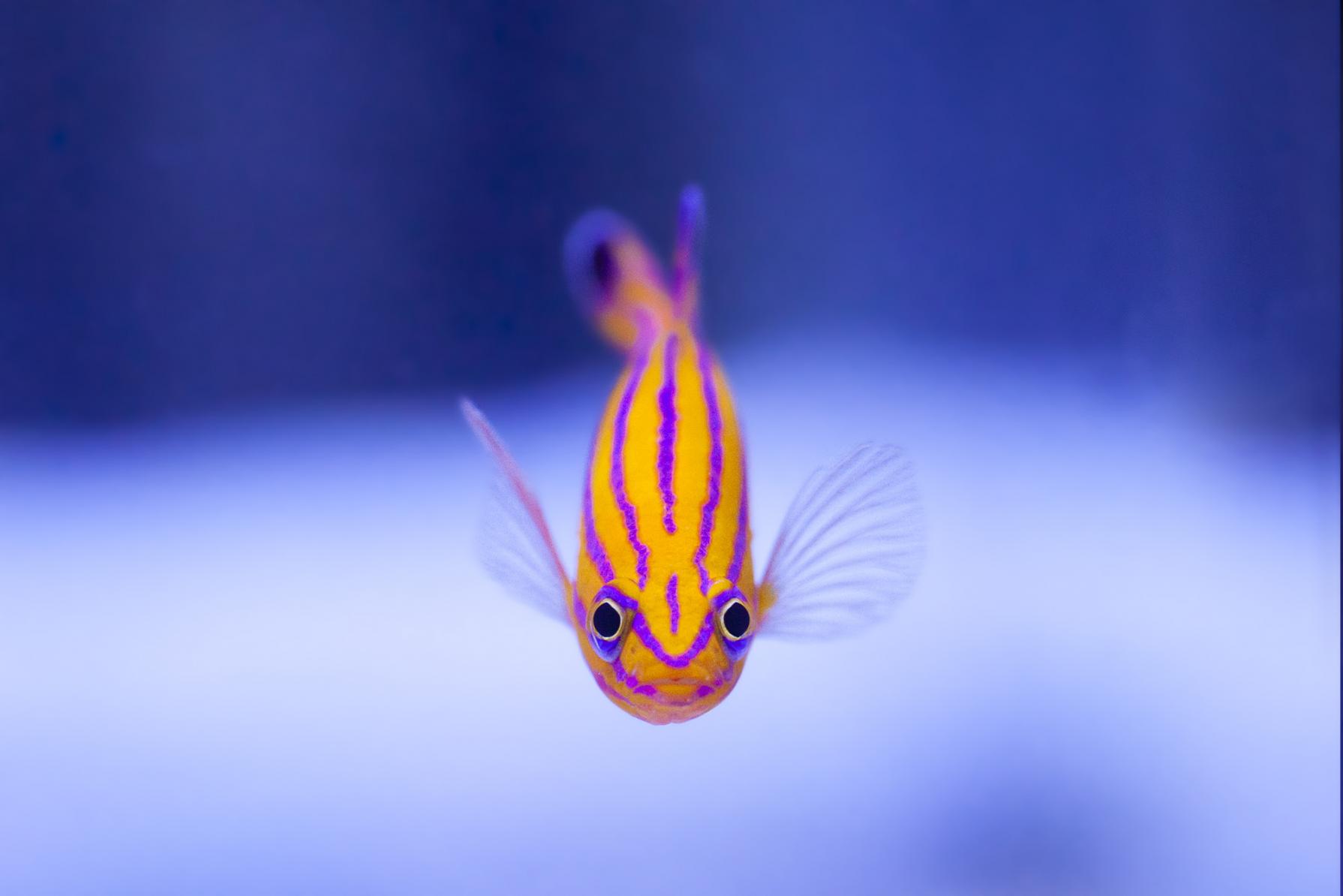
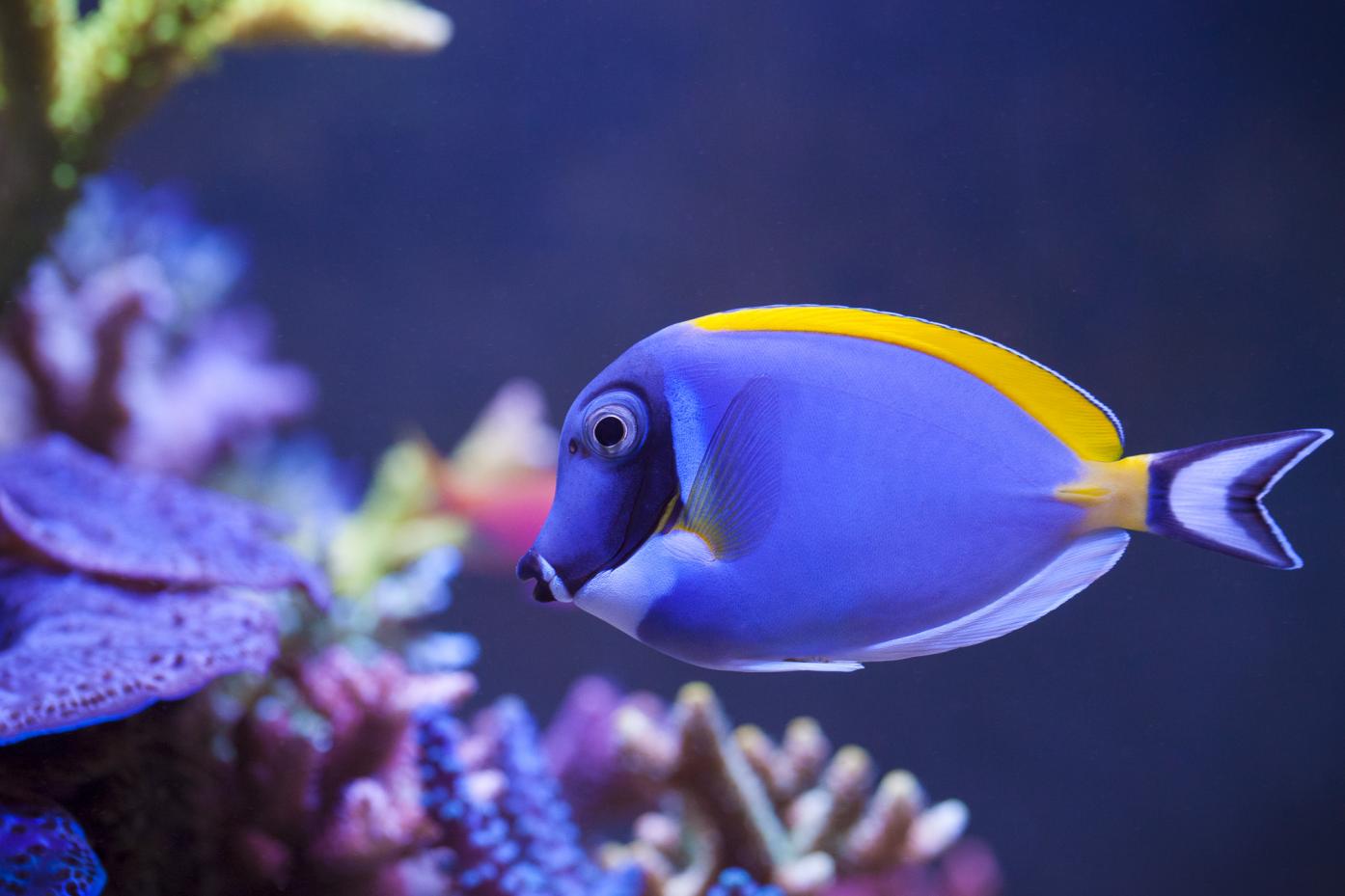
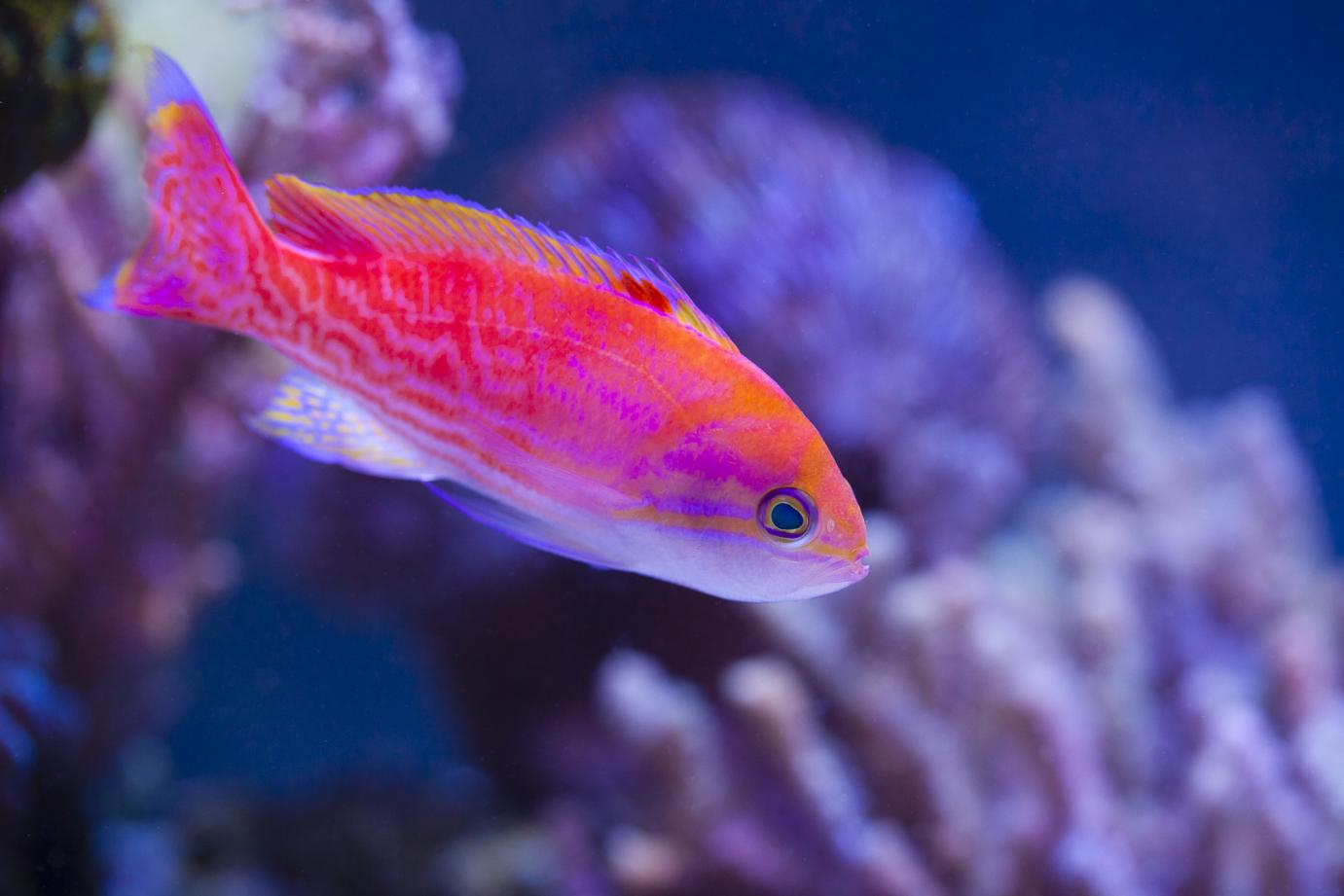
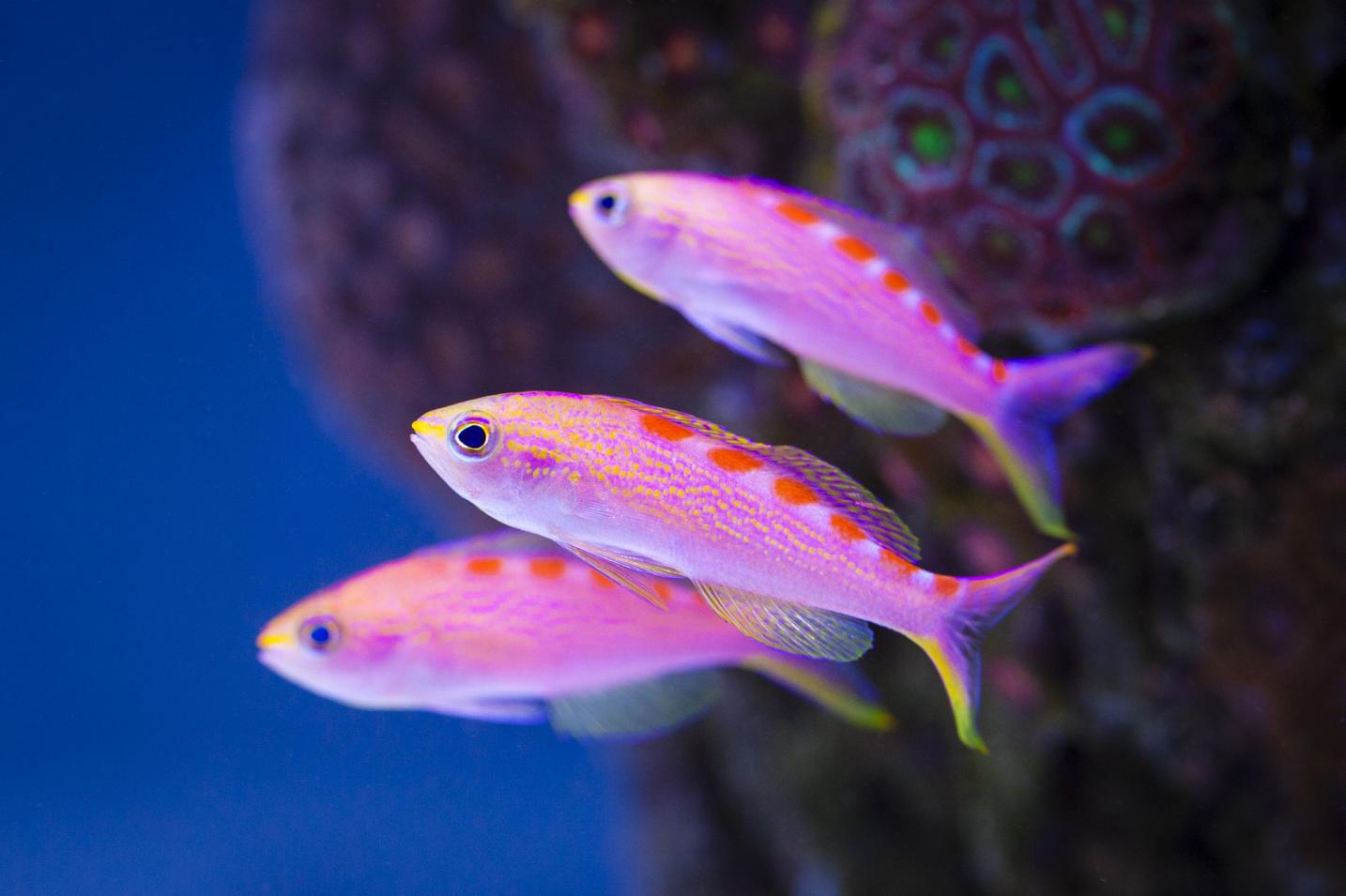
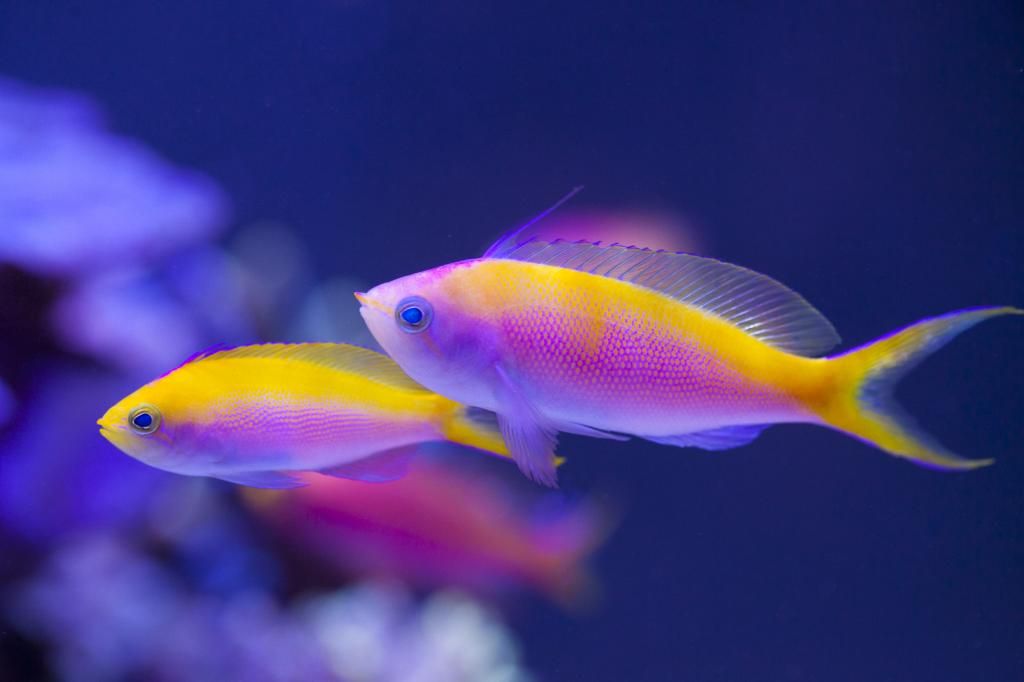
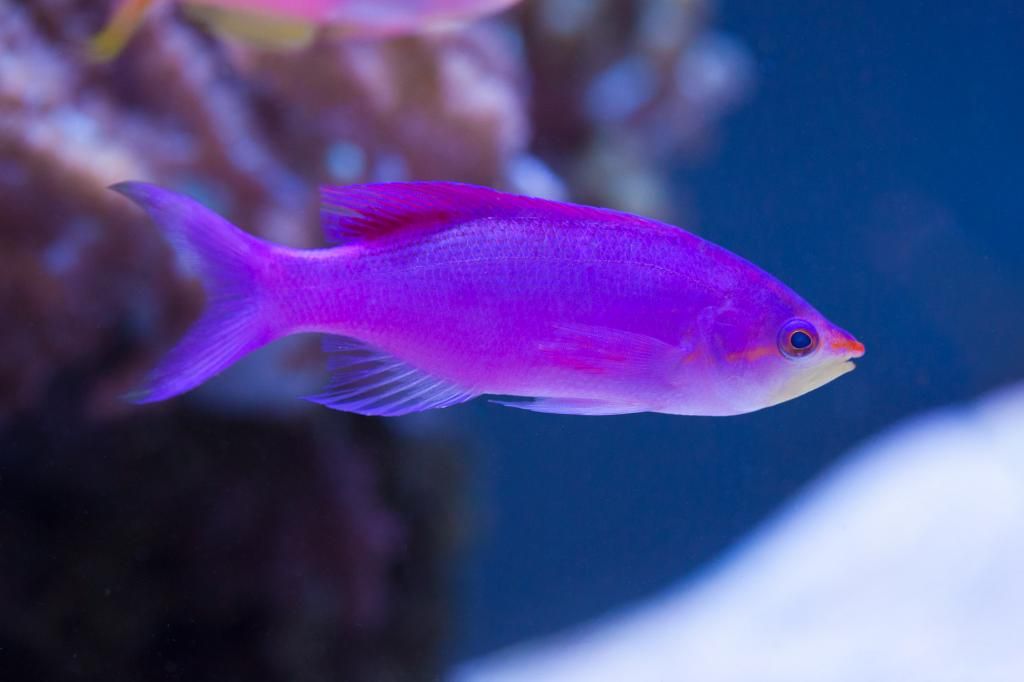
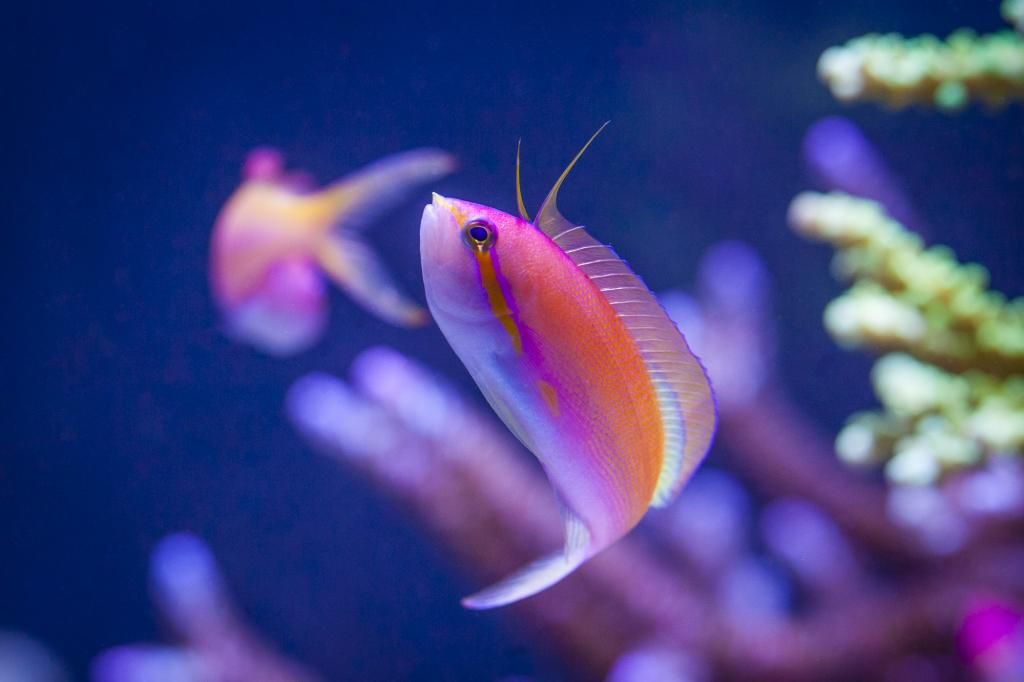
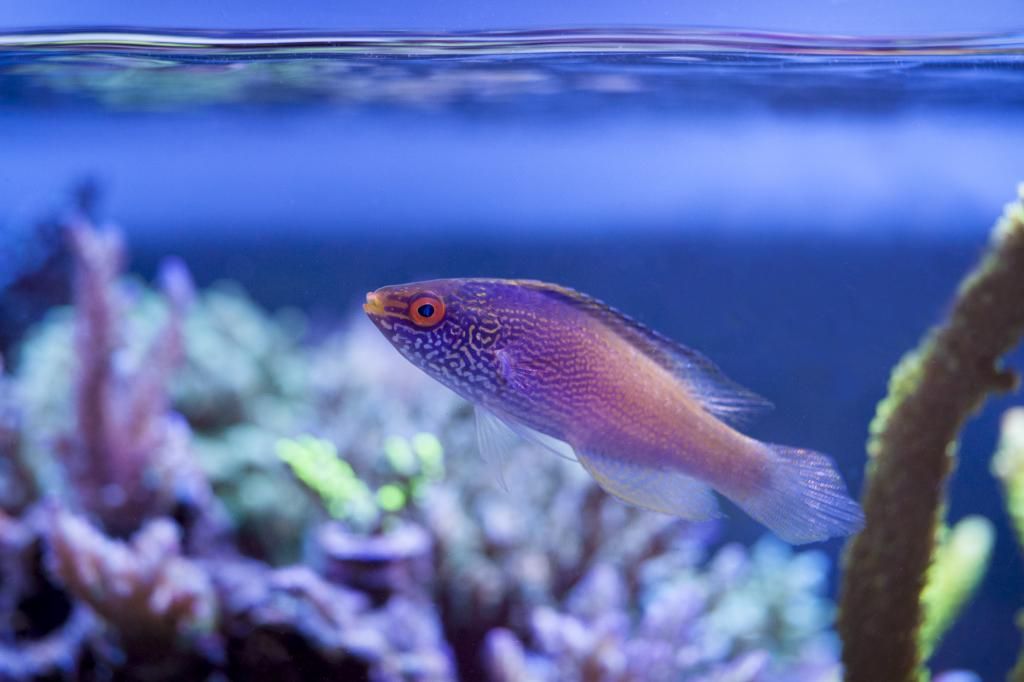
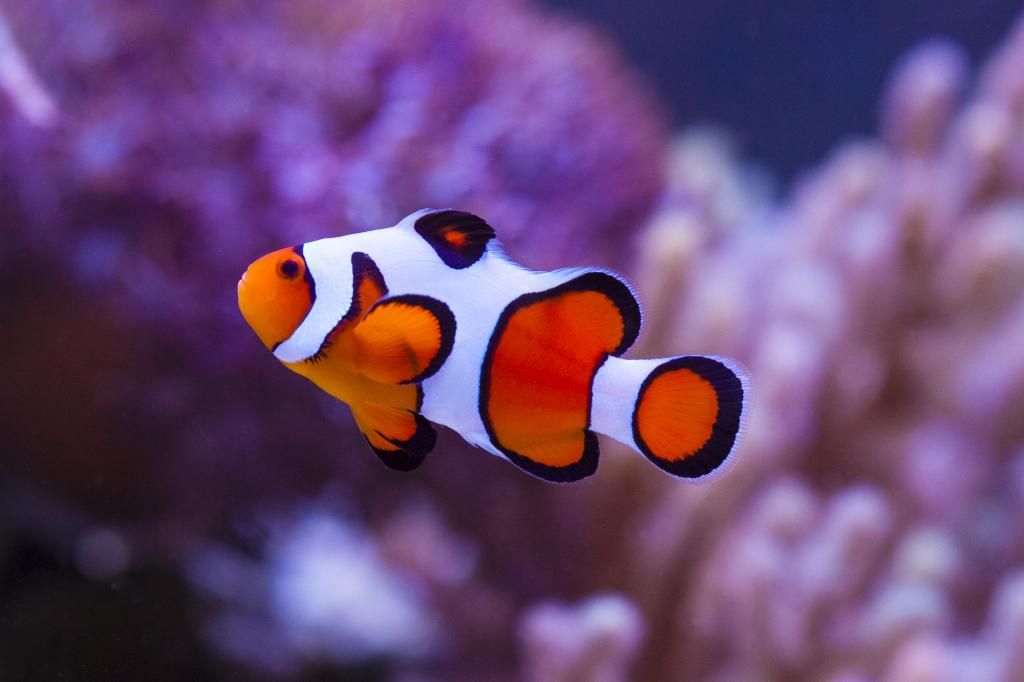
o Other inverts
12- Trochus Snails
6- Scarlet Reef Hermit Crabs
4- Blue Legged Hermit Crabs
3- Nassarrius Snails
1- Skunk Cleaner Shrimp
1- Maxima Clam
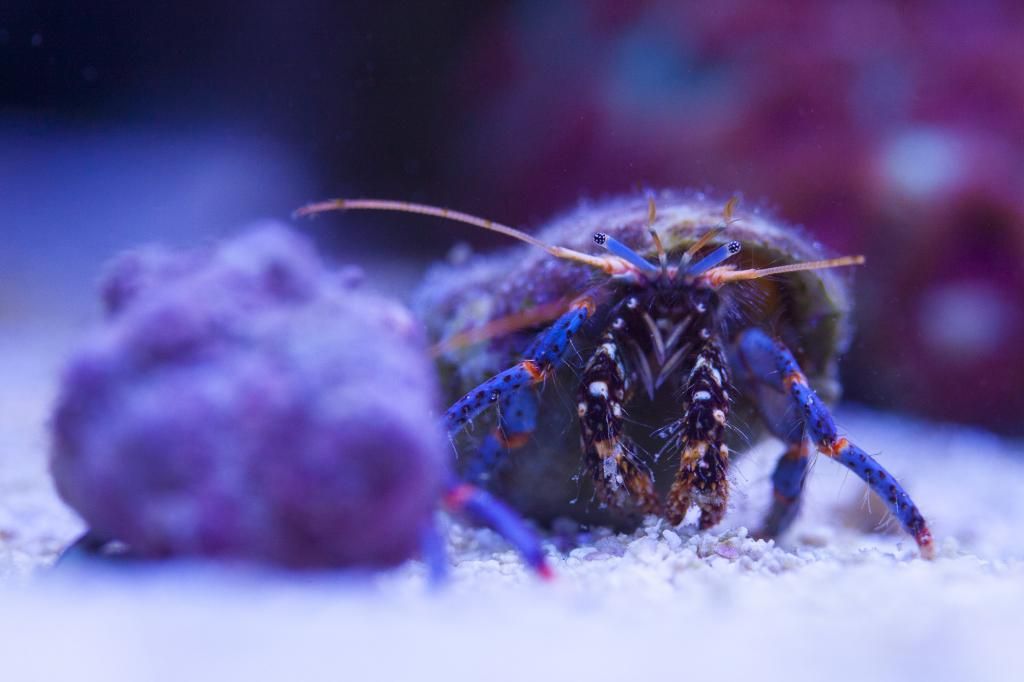
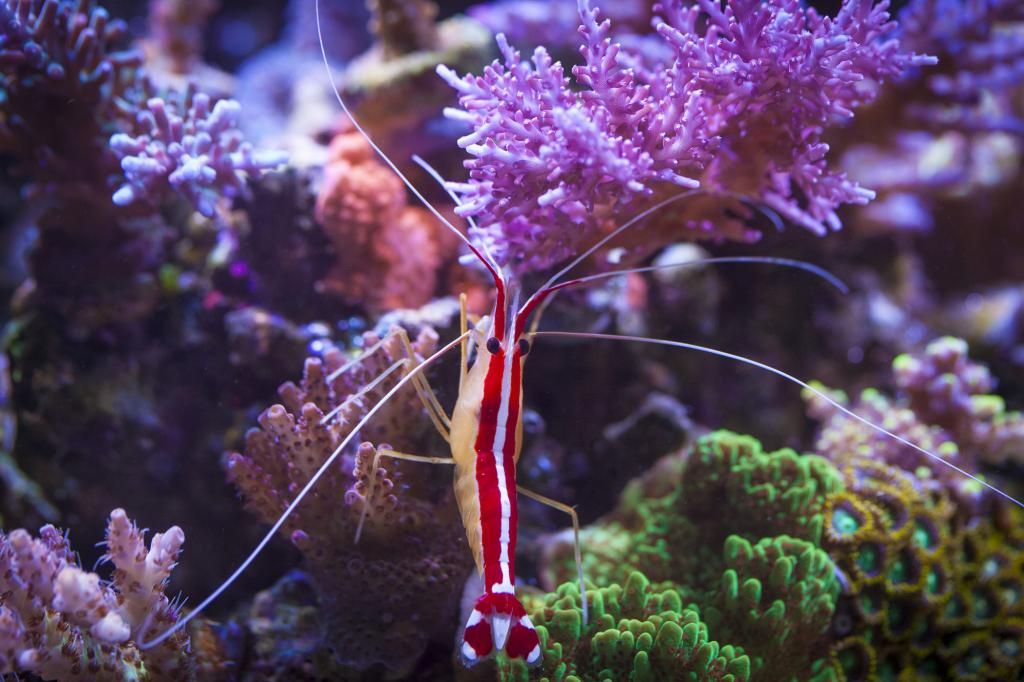
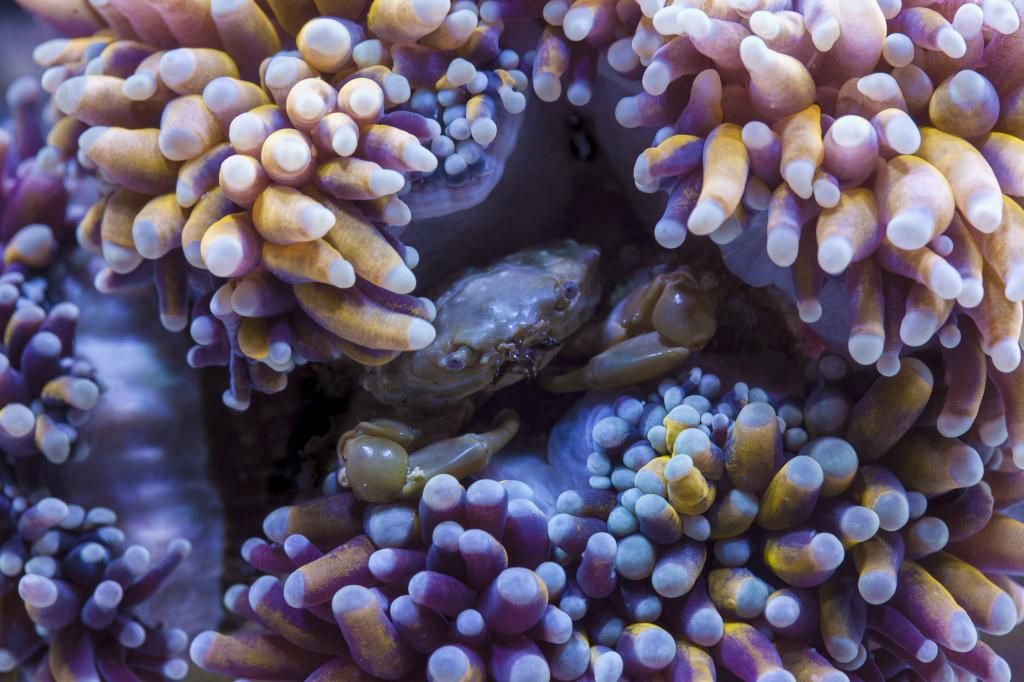
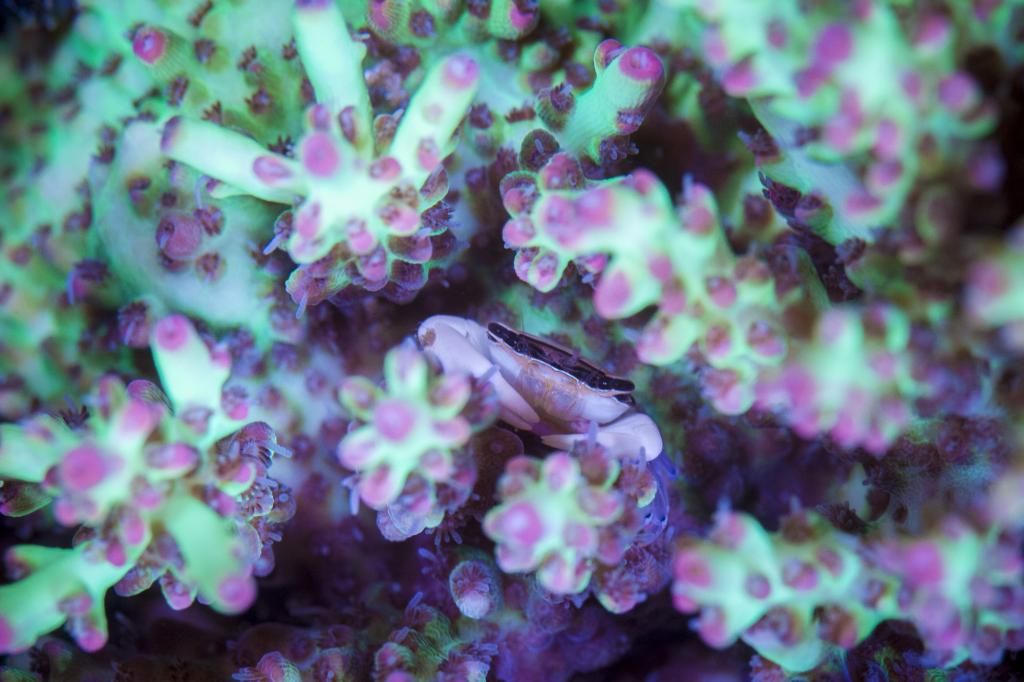
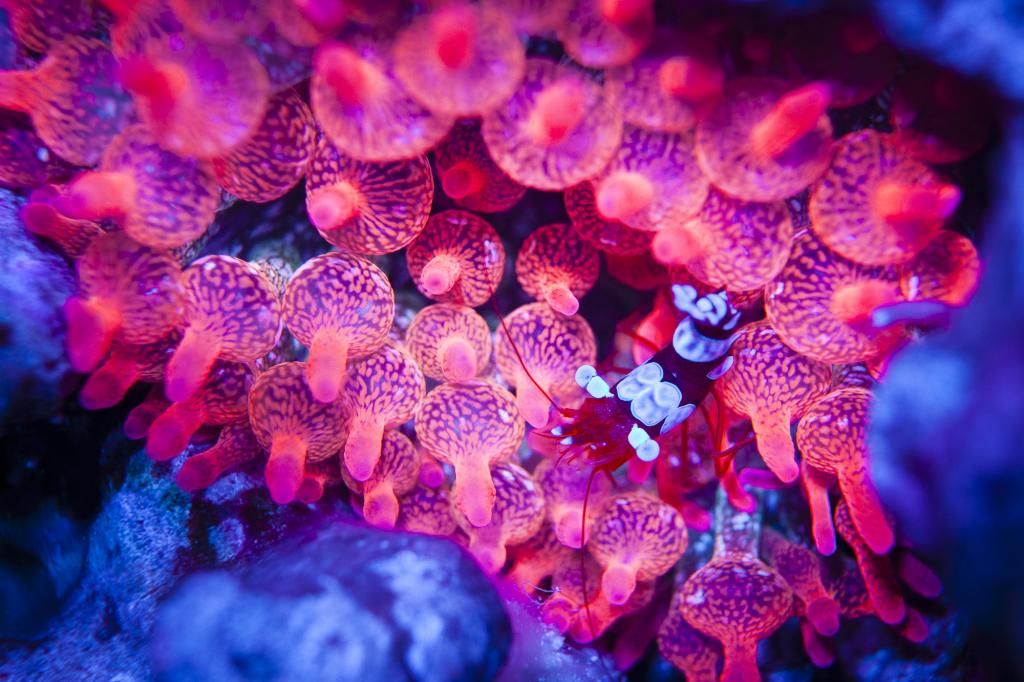

o Corals
Above the half line, coral is predominantly Acropora, with around 80 variants. A small number of Seriatopora and Montipora also share this space. Zoanthus, Palythoa, Favia, and Acanthastrea occupy a lot of the mid-level and lower rock work. I’ve also found that many lps and soft corals are perfectly content when mounted vertically or even upside down, as long as there’s some indirect light, which has allowed me to keep some things for which my aquascape wasn’t designed. I’m also keeping a few soft corals- Some colts, nepthea, and xenia.

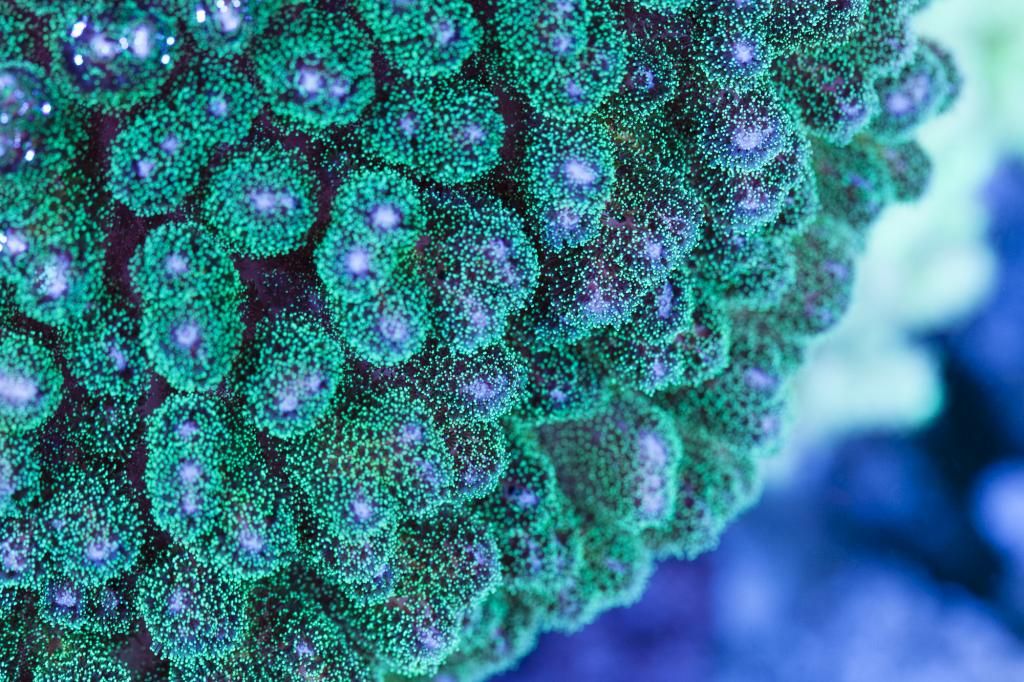

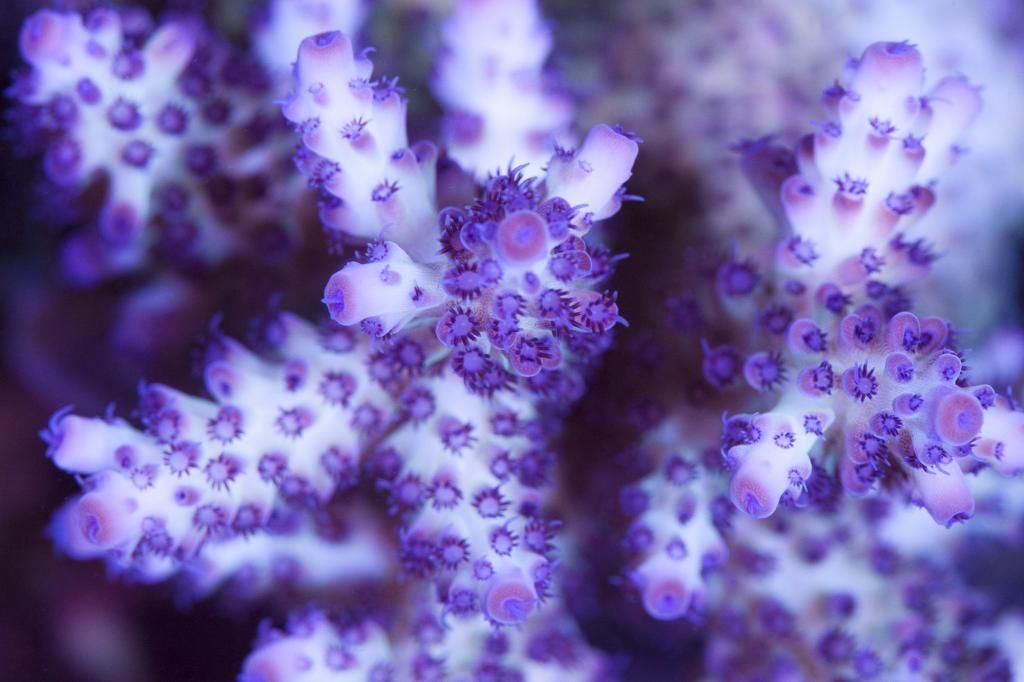
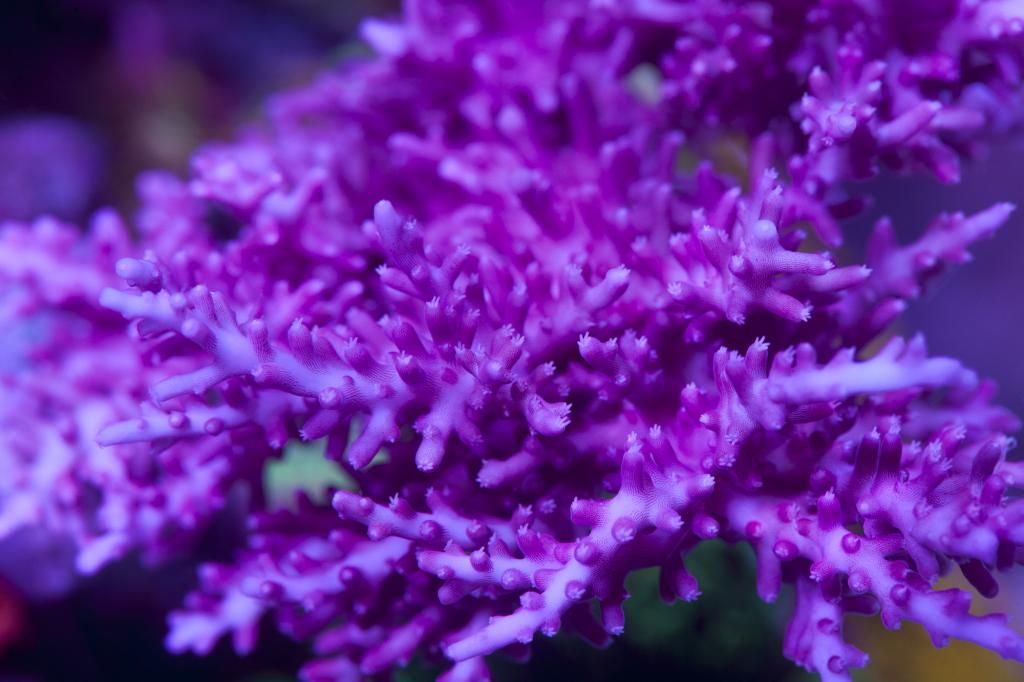
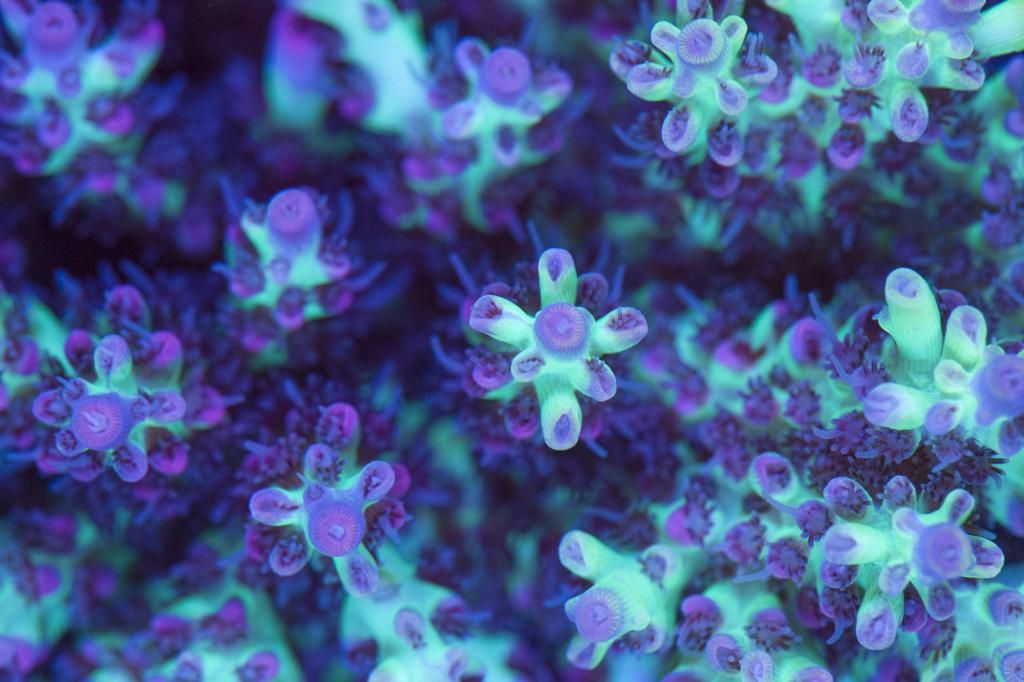
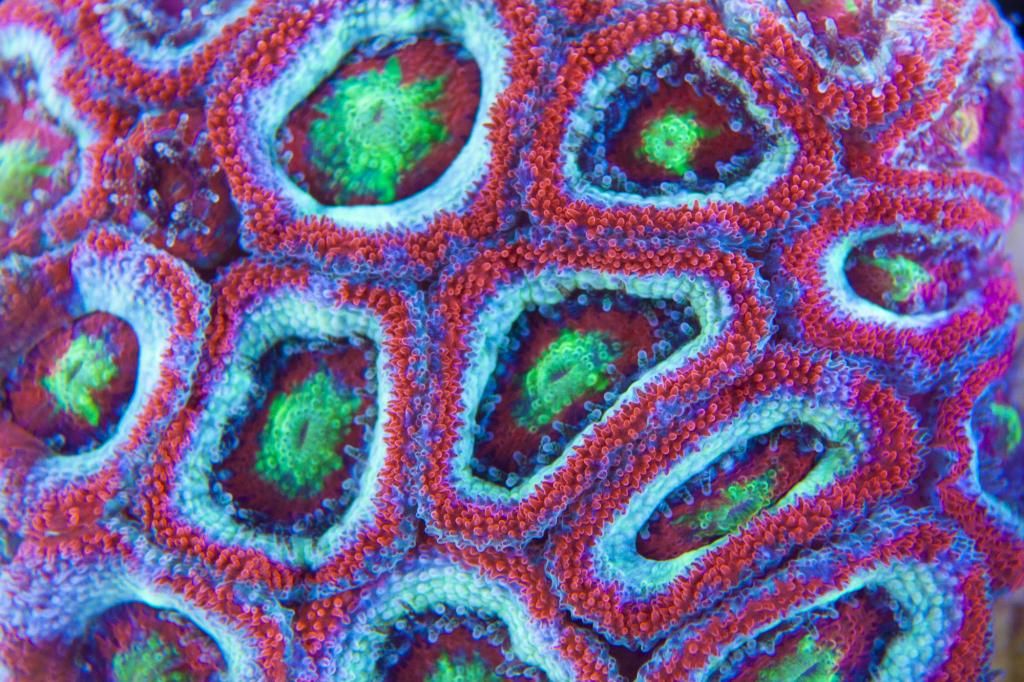
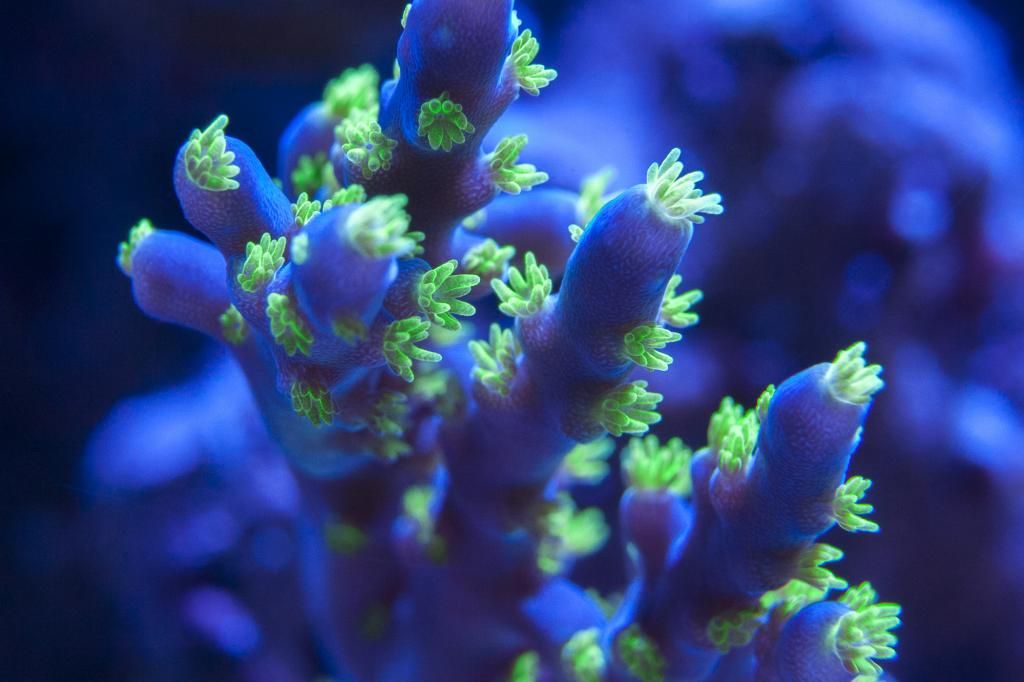
• Fish & Coral Feeding •
I’m feeding a variety of foods between three and five times per day, the foundation of which is Sustainable Aquatics 0.5mm pellets. Others include Hikari Mysis, Rod’s Fish Eggs, Cyclop-eeze, and Nutramar Ova. Once per week the tangs will get a large sheet of nori for the day. While I think that the Bartlett’s, Lyretail, and Carberryi anthias would do fine with less feeding, the smaller species like the Red Saddled Anthias definitely need to eat more frequently.
For a time, the system bordered on falling into the “ultra low nutrient” category. I combat this by adding a few Korallen-Zucht additives, namely Coral Vitalizer and Pohl’s Xtra and broadcast feed corals with BRS Reef Chili.
• Progression Photos •
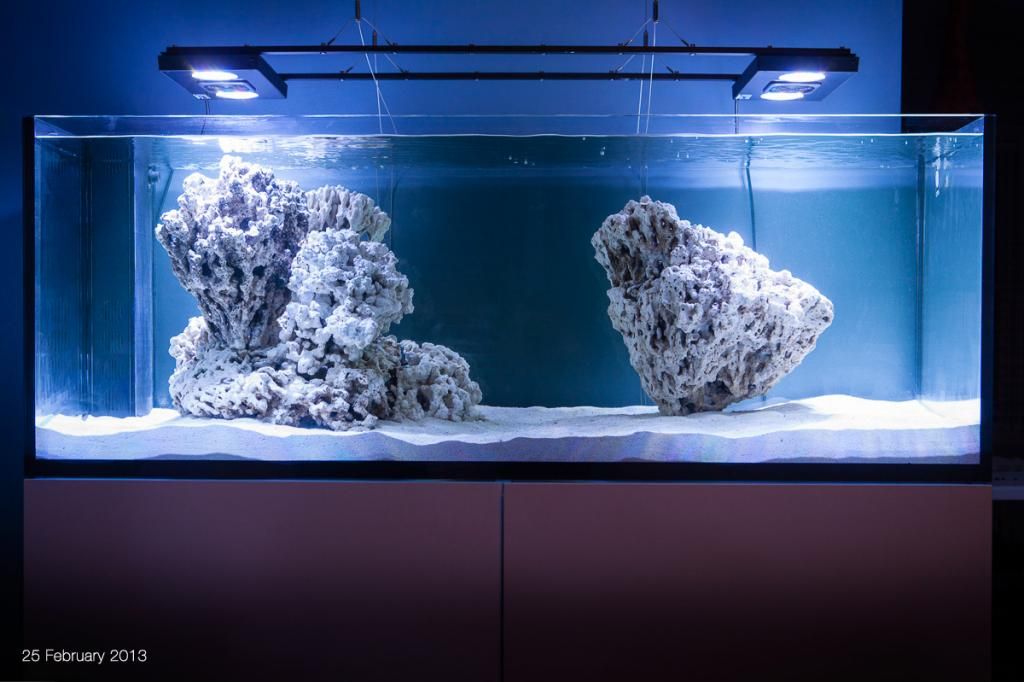
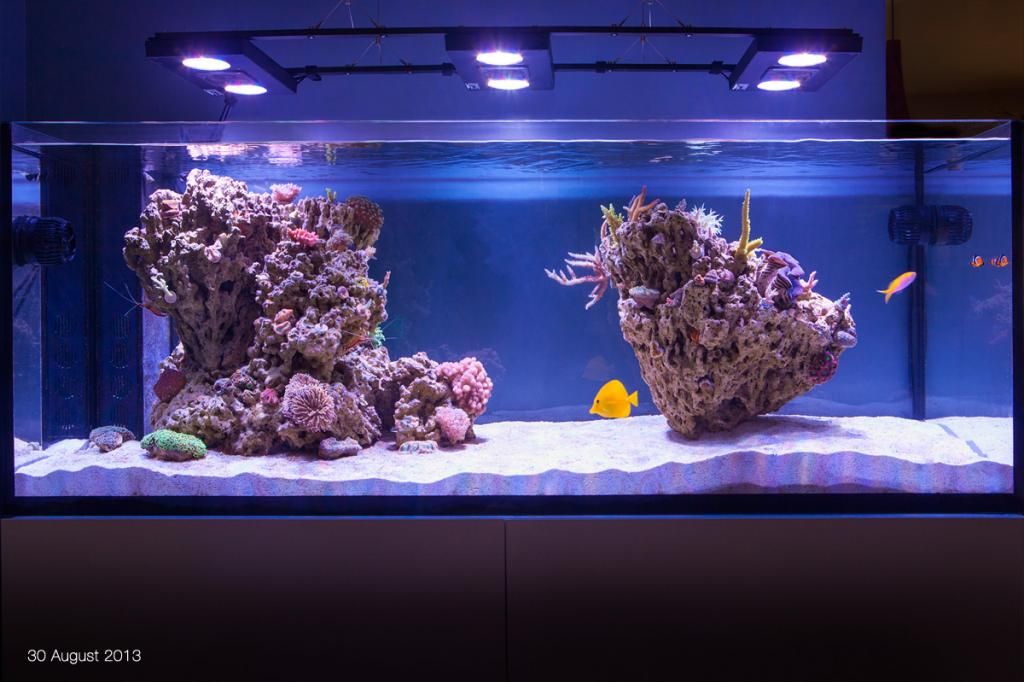

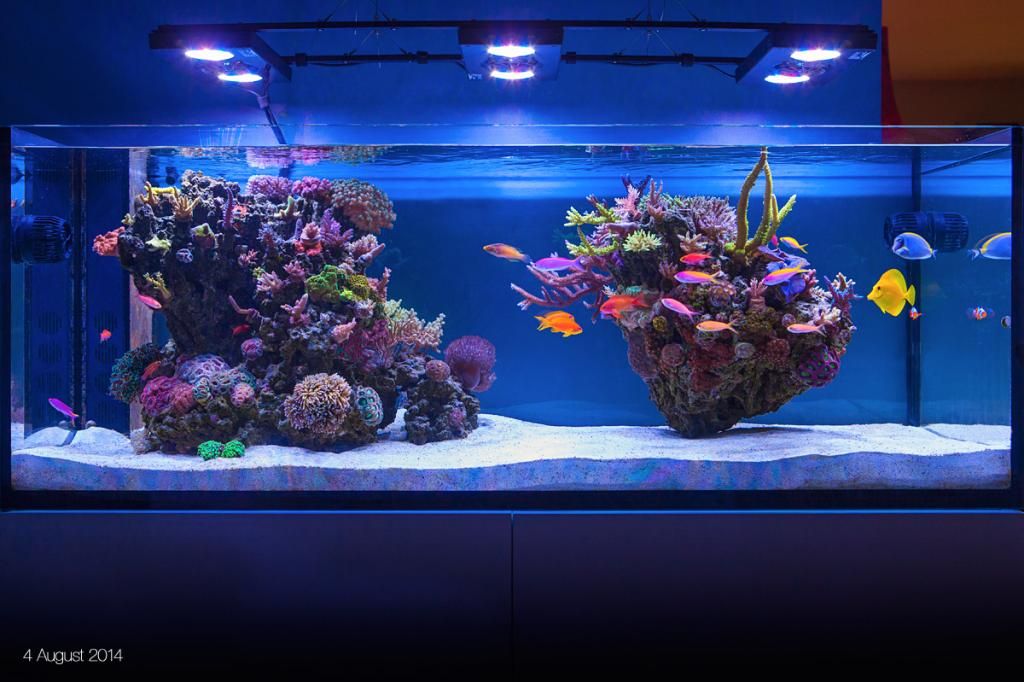
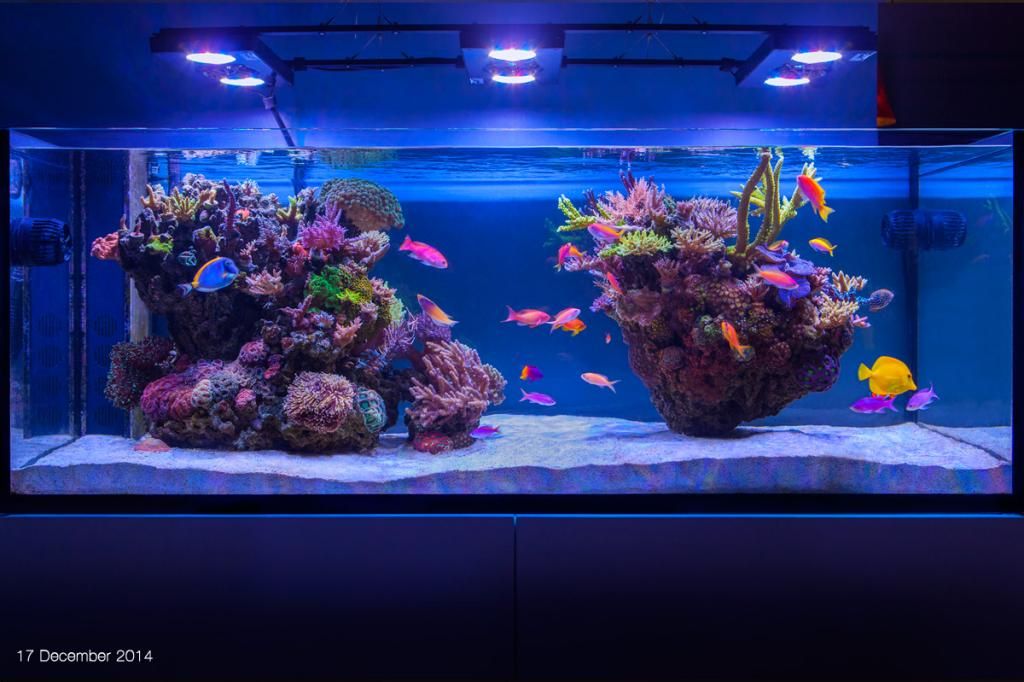
• Advice •
Research everything from equipment to practices to livestock. A lot of the cost and frustration in the hobby can be avoided with a little homework.
• Conclusion •
Thanks to R2R, my local club, and all the members who have posted over the years. Mike Paletta gave a talk this year a MACNA and brought up how difficult it used to be to get basic information in the hobby and it really made me realize what a valuable source of knowledge the forums provide. Thanks and happy reefing!
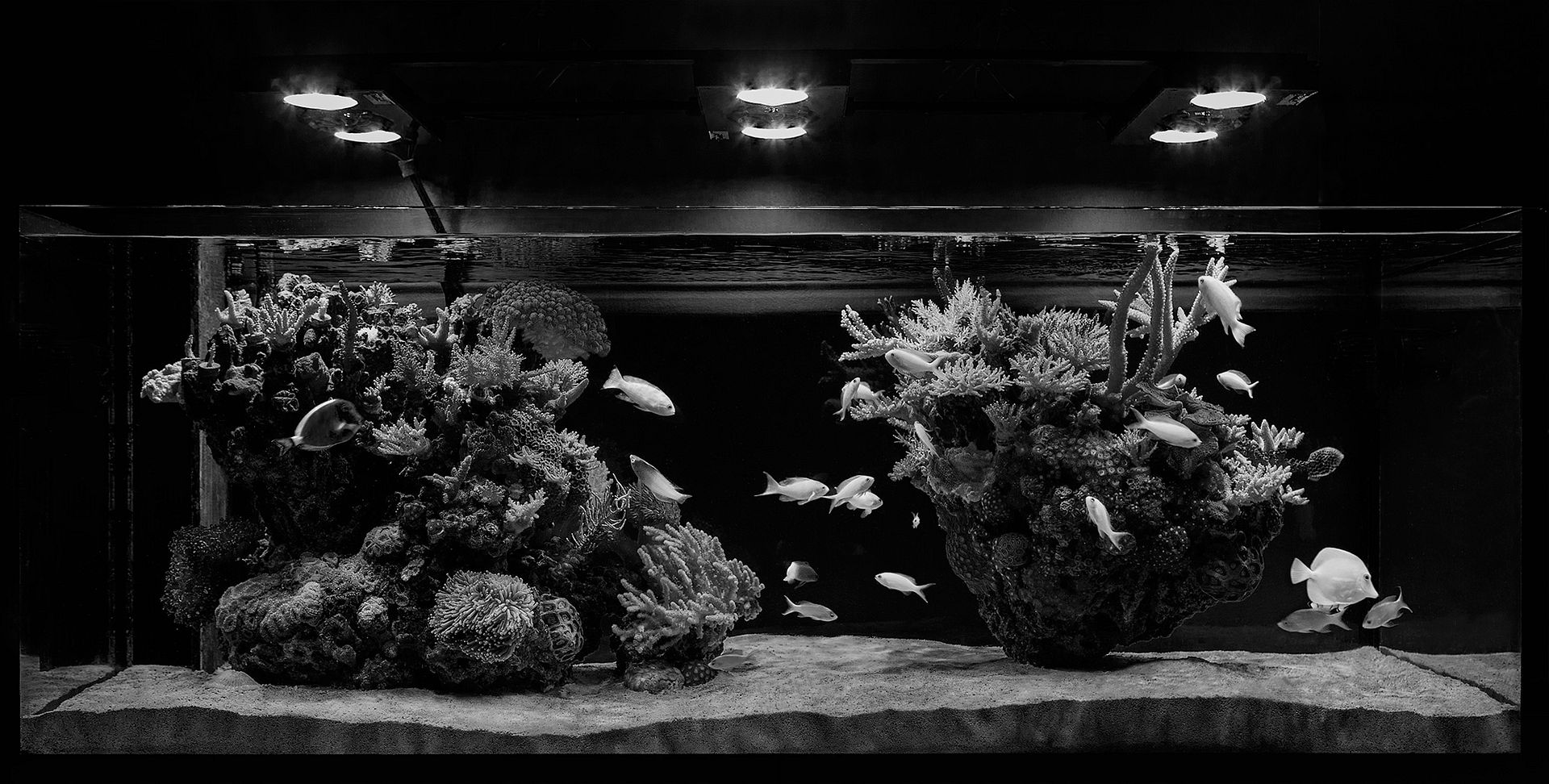
Check out other former Reef Spotlights here.
Comments are closed.

